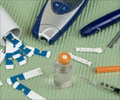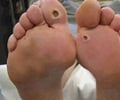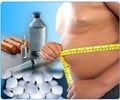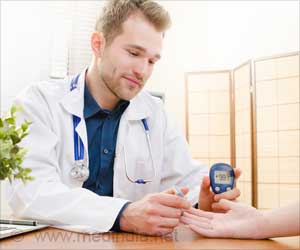A fifteen minute walk after each meal helps regulate blood sugar levels and could reduce the risk of developing type 2 diabetes, finds study.

The findings, if confirmed by additional research, could lead to an inexpensive preventive strategy for a pre-diabetic condition that can over time develop into frank type 2 diabetes, she said. An estimated 79 million Americans have pre-diabetes but most have no idea they are at risk. Other studies have suggested weight loss and exercise can prevent type 2 diabetes but this is the first study to examine short bouts of physical activity timed around the risky period following meals—a time when blood sugar can rise rapidly and potentially cause damage.
DiPietro and her colleagues recruited ten people age 60 and older who were otherwise healthy but at risk of developing type 2 diabetes due to higher-than-normal levels of fasting blood sugar and to insufficient levels of physical activity. Older people may be particularly susceptible to impairments in blood sugar control after meals due to insulin resistance in the muscles and also due to a slow or low insulin secretion from the pancreas. Post-meal high blood sugar is a key risk factor in the progression from impaired glucose tolerance (pre-diabetes) to type 2 diabetes and cardiovascular disease, DiPietro said.
Participants completed three randomly-ordered exercise protocols spaced four weeks apart. Each protocol comprised a 48-hour stay in a whole-room calorimeter, with the first day serving as a control period. On the second day, participants engaged in either post-meal walking for 15 minutes after each meal or 45 minutes of sustained walking performed at 10:30 in the morning or at 4:30 in the afternoon. All walking was performed on a treadmill at an easy-to-moderate pace. Participants ate standardized meals and their blood sugar levels were measured continuously over each 48 hour stay.
The team observed that the most effective time to go for a post-meal walk was after the evening meal. The exaggerated rise in blood sugar after this meal—often the largest of the day—often lasts well into the night and early morning and this was curbed significantly as soon as the participants started to walk on the treadmill, DiPietro said.
Most people eat a big afternoon or evening meal and then take a nap or watch television. "That's the worst thing you can do," DiPietro said. "Let the food digest a bit and then get out and move," she says. A walk timed to follow the big evening meal is particularly important because this research suggests high post-dinner blood sugar is a strong determinant of excessive 24-hour glucose levels, DiPietro said.
Advertisement
Source-Eurekalert















